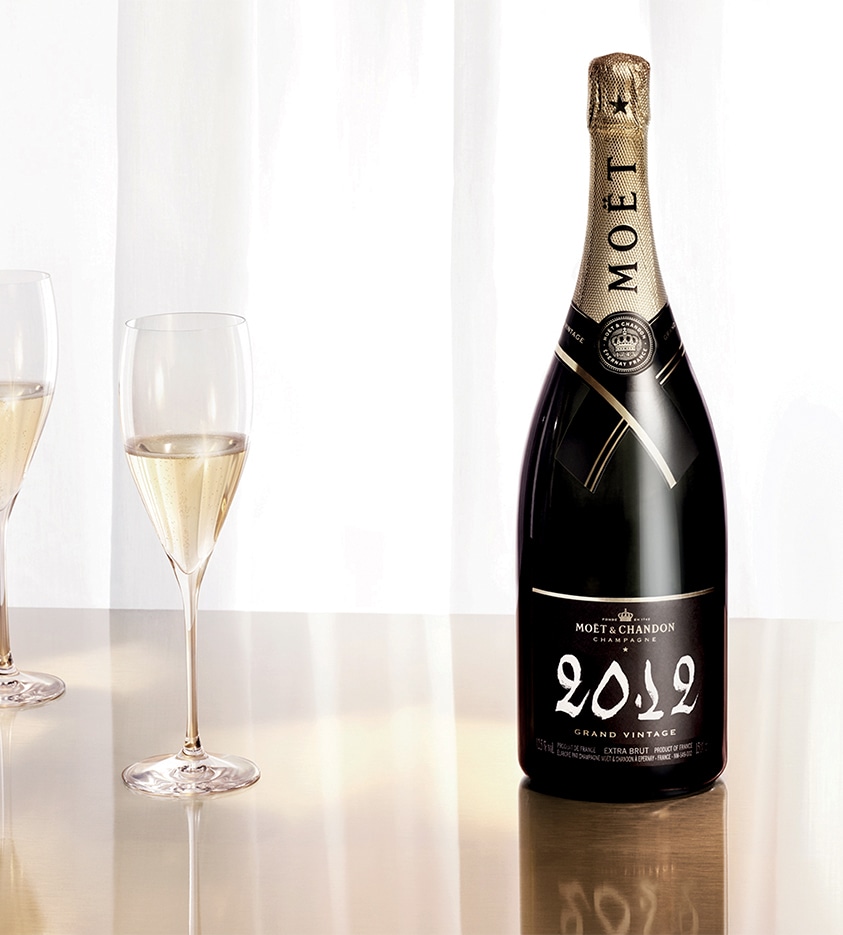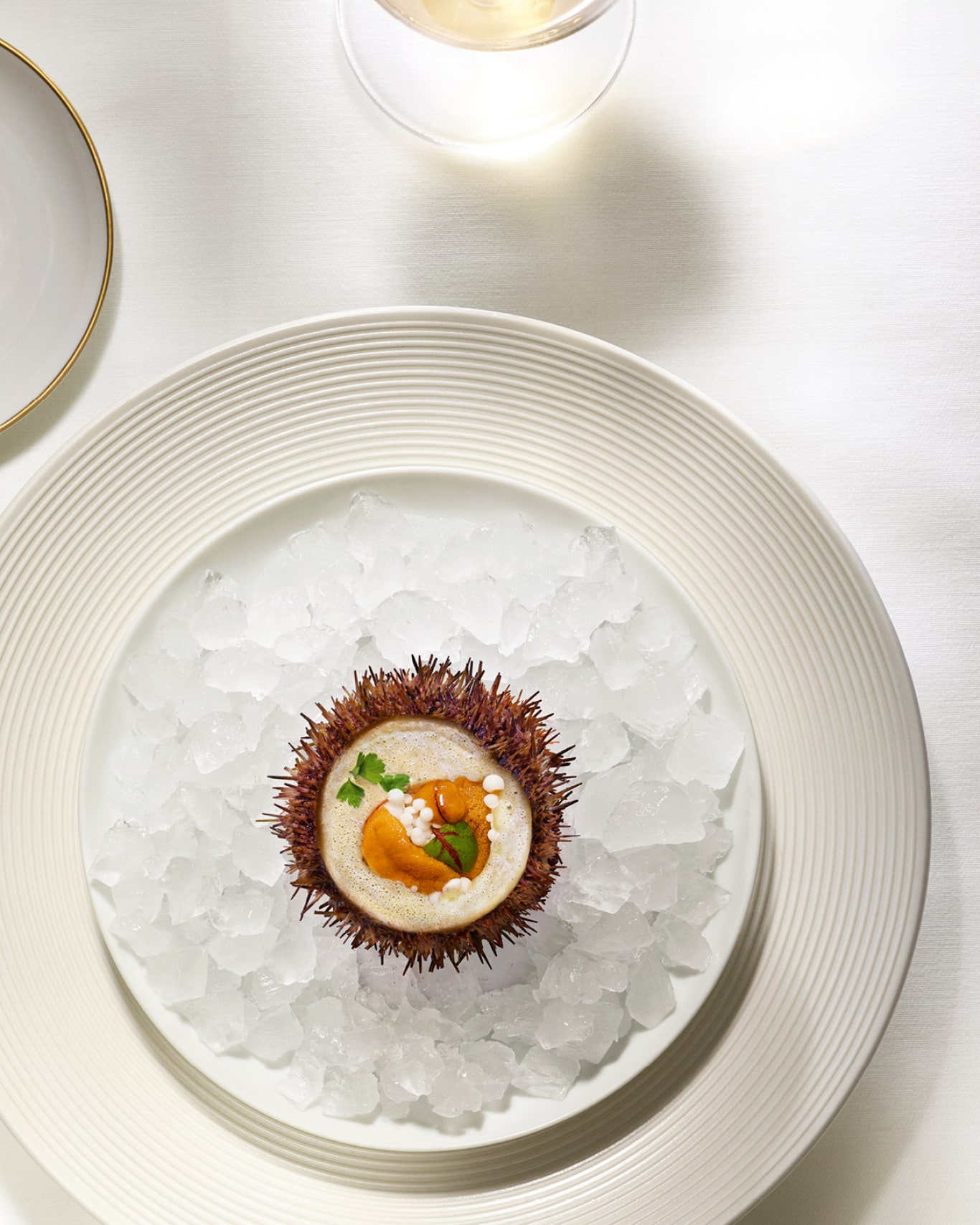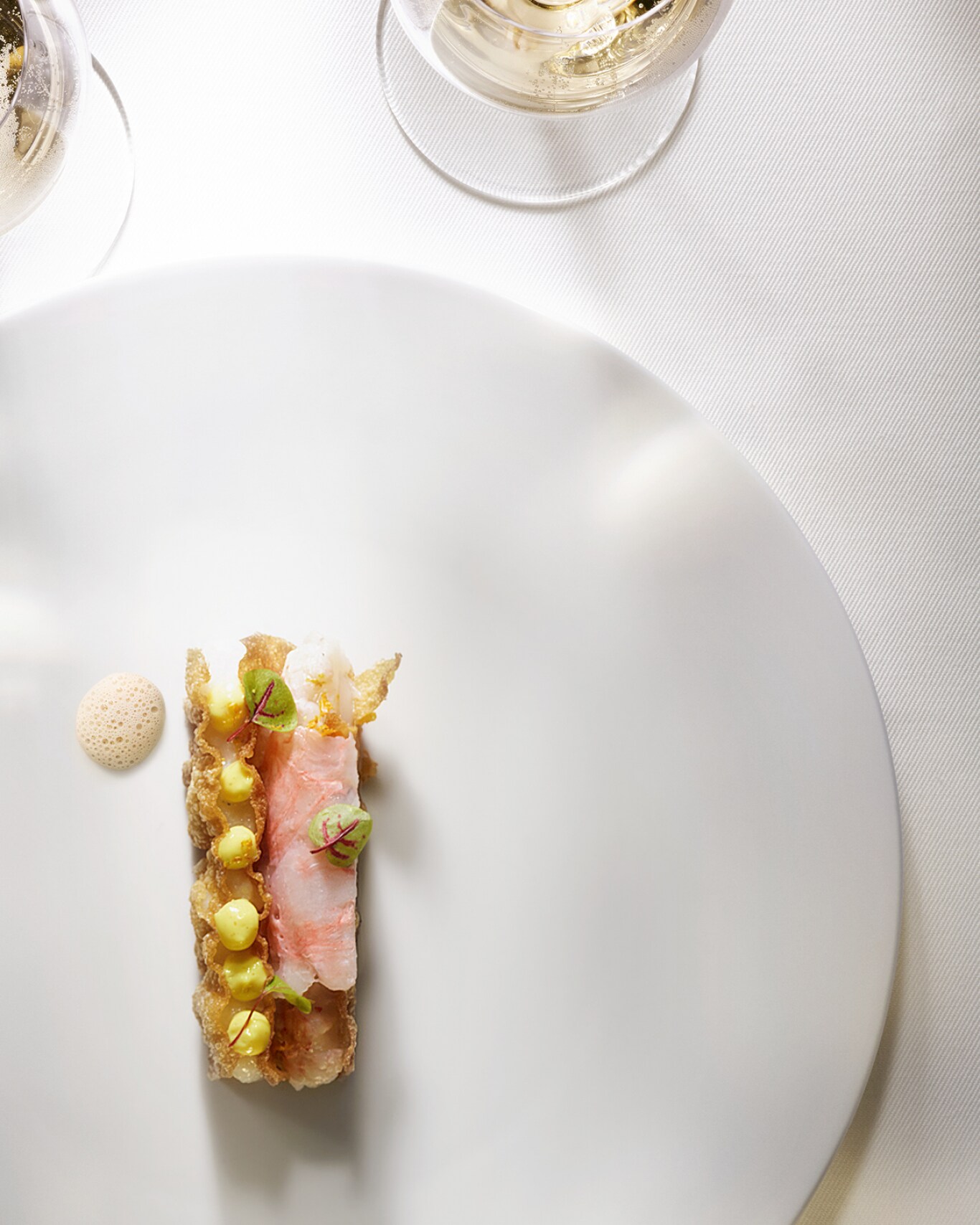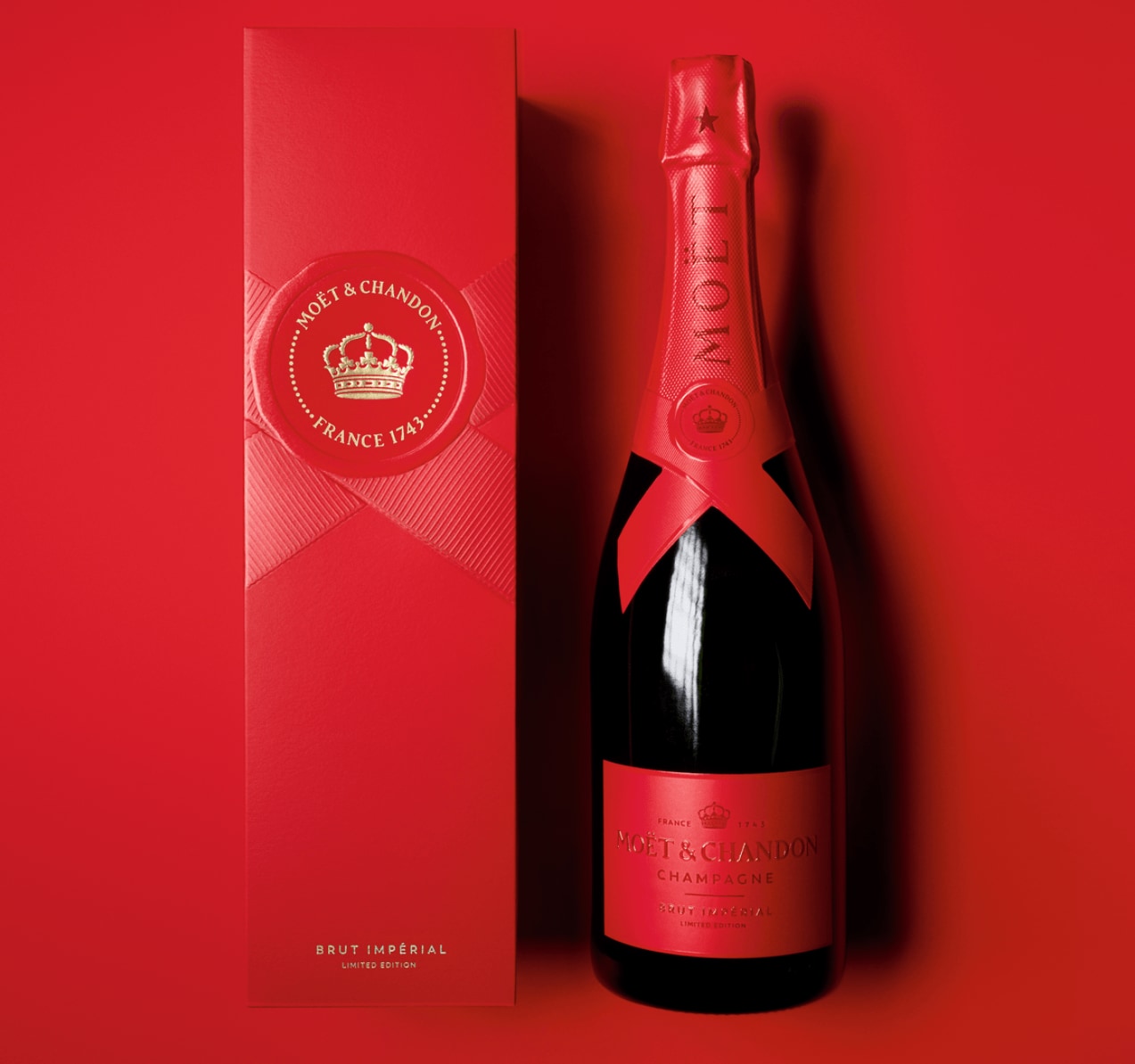Grand Vintage 2012
Grand Vintage 2012
tasting notes
COMPOSITION
This extraordinary vintage, which went through a series of extreme weather events, is also unusual compared with other Grand Vintage champagnes owing to the proportions in the blend. While Chardonnay is the single most prominent grape in the blend (41%), the black varieties dominate and were particularly successful this vintage. Meunier is particularly assertive, and at 26% its volume is almost equal to Pinot Noir (33%).
A SHIMMERING COLOUR
Bright pale yellow colour with green glints, and fine and persistent bubbles.
A BOUQUET OF FRESHNESS
Hints of fresh white flowers evolve towards pastry, sweet and blond notes, punctuated by nuances of fresh walnut, hazelnut and crispbread. They are enhanced with crunchy, freshly ripe fruit with aromas of pear, white peach, and nectarine.
A BALANCED PALACE
The first contact is velvety, supple and sleek. Then the texture unfolds, as soft as cashmere or felt. This initial softness gradually purifies, the acid structure lengthens and persists, developing into a tangy note with a taste of the sea, underscored by a delicious pink grapefruit note.
DOSAGE
5 g/liter
CELLARING TIME
5 years
AGING AFTER DISGORGEMENT
At least 6 months
CHROMATICITY
« Car nous voulons la Nuance encor, Pas la Couleur, rien que la nuance ! » (Paul Verlaine)
On tasting, the cool green of fluorite evolves towards slightly brioche-scented pastry tones, towards the warm crunch of hazelnut. Then, the fruity notes give rise to pink pastels like on the fluffy skin of a white peach.
TEXTURES
Without being opulent, the rich and persistent structure of this Grand Vintage 2012 champagne seeks the company of intense yet agile dishes, like a feather or cashmere fabric. The appearance of a crunchy element in this ensemble will provide a stunning contrast.
do
This hire-wire act of a champagne requires the same dexterity from the chef: it all hangs in the balance.
The harmony must be perfectly in tune between sweetness and freshness.
Choose fish and shellfish that have a certain firmness (monkfish, turbot, scallops, flat oysters, etc.)
Use broth, braised or simmered cooking techniques for white meats.
Explore sweet spices.
don't
-
The powerful sea aromas of natural oysters, oyster leaf, sea urchins, etc.
-
Pronounced and dominant acidity: vinegar, lemon juice, lemon caviar, etc.
-
Excessive or overripe fruity aromas, excessive sweetness.
-
Overly strong juices and potent or concentrated flavours in sauces.
-
Nuts and dried fruit, which are too dark at this stage of the vintage’s maturation process.
Ingredients matrix


pourquoi ?
Jutosité délicate et élégante
Œufs de poisson (pour le craquant
et la salinité iodée)

Quel ingrédient ?
(daurade, bar, turbot, St. Pierre, Sole)
Œufs de poisson

Comment ?
Cru
(daurade, bar, turbot, St. Pierre, Sole)
Œufs de poisson
Cuit
Poché et servis avec une mayonnaise
vis avec une mayonnaise


Ingredients matrix
Grand Vintage 2012

Ingredients matrix
Grand Vintage 2012
Poisson
Pourquoi ?
Mâche non excessive
Jutosité délicate et élégante
Œufs
de poisson (pour le craquant et la salinité iodée)
QUEL INGRédient ?
Poissons à chair blanche
(daurade, bar, turbot, St.
Pierre, Sole) Œufs de poisson
Comment ?
Cru :
Sushi, sashimi, carpaccio
Mariné “à la
tahitienne” (Citron vert, gingembre, lait de coco)
Ceviche
sans excès de vinaigre
ou de soja
Cuit :
Rôti
sans excès de coloration
Poché et servis avec une
mayonnaise vis avec une mayonnaise
COquillages
Pourquoi ?
Mâche non excessive
Jutosité délicate et élégante
Œufs
de poisson (pour le craquant et la salinité iodée)
QUEL INGRédient ?
Poissons à chair blanche
(daurade, bar, turbot, St.
Pierre, Sole) Œufs de poisson
Comment ?
Cru :
Sushi, sashimi, carpaccio
Mariné “à la
tahitienne” (Citron vert, gingembre, lait de coco)
Ceviche
sans excès de vinaigre
ou de soja
Cuit :
Rôti
sans excès de coloration
Poché et servis avec une
mayonnaise vis avec une mayonnaise
Crustacés
Pourquoi ?
Mâche non excessive
Jutosité délicate et élégante
Œufs
de poisson (pour le craquant et la salinité iodée)
QUEL INGRédient ?
Poissons à chair blanche
(daurade, bar, turbot, St.
Pierre, Sole) Œufs de poisson
Comment ?
Cru :
Sushi, sashimi, carpaccio
Mariné “à la
tahitienne” (Citron vert, gingembre, lait de coco)
Ceviche
sans excès de vinaigre
ou de soja
Cuit :
Rôti
sans excès de coloration
Poché et servis avec une
mayonnaise vis avec une mayonnaise
INSPIRATIONS
snacking
Etiam lobortis rutrum purus interdum finibus.
Ut vitae cursus est. Vestibulum vulputate ac libero ut scelerisque.
Nam rhoncus cursus enim, nec sollicitudin tortor porttitor ut.






